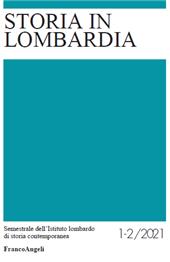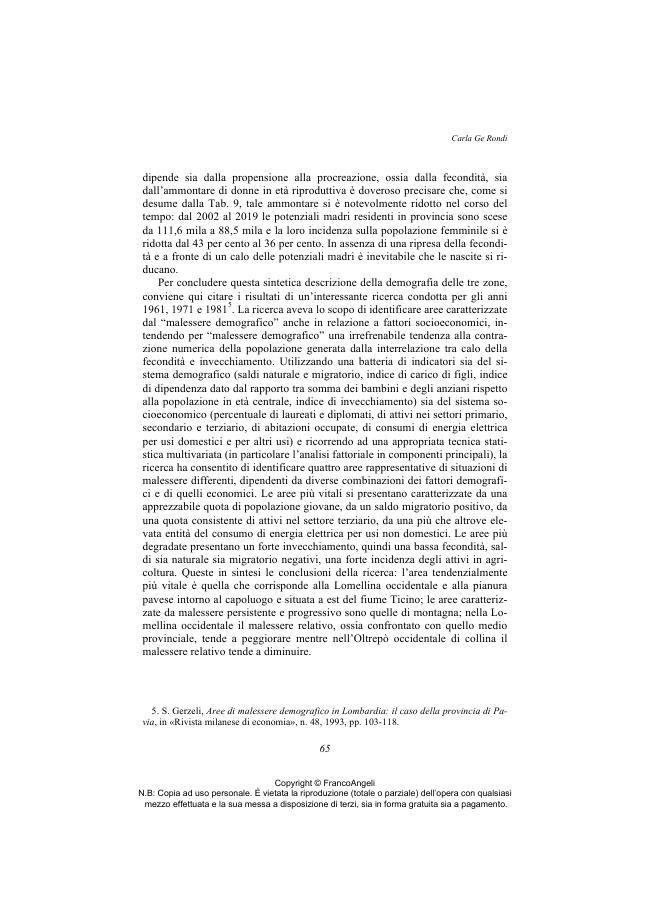La dinamica demografica della provincia e del capoluogo pavesi
57-72 p.
Nel saggio vengono analizzate le componenti del movimento naturale e migratorio che hanno contribuito alla dinamica della popolazione provinciale e del capoluogo di Pavia, caratterizzata da acuti sintomi di malessere demografico identificabili nella denatalità e nell'invecchiamento. A livello provinciale il più elevato numero di abitanti (526,4 mila) venne registrato al censimento del 1971; vi fu poi un sensibile regresso fino al 1991, regresso che si è attenuato di intensità fino a trasformarsi in una decisa ripresa nel primo decennio di questo secolo. Tale dinamica non è però stata condivisa da tutte e tre le aree in cui tradizionalmente l'area provinciale viene suddivisa poiché alla vitalità del Pavese si contrappone il declino dell'Oltrepò e la stazionarietà della Lomellina. La popolazione del comune di Pavia si è accresciuta di circa 7,5 mila abitanti (dai 64 mila del 1951 ai 71 mila del 2001) al ritmo medio annuo di 2,2 unità ogni mille.
Tale incremento demografico ha origine nella forte tendenza espansiva manifestatasi tra il 1951 e il 1971, tendenza che si è andata esaurendo nei primi anni Settanta per poi convertirsi in regresso. [Testo dell'editore].
This paper analyses the natural (birth and death) and migratory movements that have characterized the population dynamics of the town of Pavia, on the one hand, and of the Province of Pavia, on the other, starting form the second half of the 20th century. In both areas, acute symptoms of demographic malaise can be observed, connected to declining births and aging. Considering the province of Pavia, the highest number of inhabitants (526,4 thousand) is found in the 1971 census. After that, a marked declining trend begins which gradually lessens in magnitude and finally transforms into a clear rise in the first decade of the 21st century. However, such dynamics are not equally observable in the three geographical areas into which the province of Pavia is traditionally divided, the Pavese area being characterised by vitality, the Oltrepò by decline and the Lomellina by stasis.
Considering the town of Pavia, a rise in the population can be observed: its inhabitants passed from 64 thousand in 1951 to 71 thousand in 2001 (+7.5 thousand), with the slow average annual rate of 2.2 units per thousand. However, such demographic rise is due to the marked expansive trend characterising the period from 1951 to 1971, such trend gradually slowing down in the early 1970s and then turning into decline in the following years. [Publisher's text].
Is part of
Storia in Lombardia : XLI, 1/2, 2021-
Articles from the same issue (available individually)
-
Information
ISSN: 1972-5035
KEYWORDS
- Pavese, malessere demografico, natalità, fecondità, mortalità, migrazioni, invecchiamento
- Pavese, demographic malaise, birth rate, fertility, mortality, migration, aging



